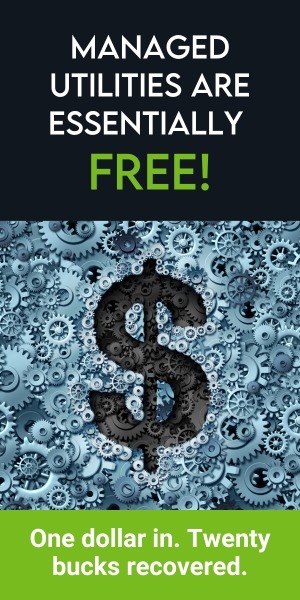When the Smiths moved into a brand‑new rental home last spring, they didn’t just discover fresh flooring or smart thermostats; they stepped into a lifestyle shaped by seamless utility management. They never saw a bill go astray, never gawked at confusing meter readings, and never spent time tracking paperwork. That’s not luck. That’s intention. And in 2025, managed utilities are one of the biggest factors separating thriving built-to-rent (BTR) operators from those struggling to keep costs in check.
The Build-to-Rent Boom: Why Everyone’s Paying Attention
The Build-to-rent wave isn’t slowing down. Families priced out of homeownership are still looking for space and stability, and investors see steady returns in professionally managed rental homes. That combination has fueled record-level development across the country.
In 2024, developers delivered nearly 40,000 new BTR homes, and another 60,000 are in the pipeline. Markets from Phoenix to Charlotte are seeing entire neighborhoods rise, complete with pools, dog parks, and fitness centers. These aren’t scattered single family rentals. They’re communities intentionally designed with shared amenities, professional maintenance, and consistent management.
Why Utilities Are the Elephant in the Room
BTR comes with advantages, but also with a very real set of operational challenges. Homes are larger than apartments, which means higher baseline costs. A vacant 2,000-square-foot home can use twice the energy of an empty multifamily unit. Multiply that across dozens or hundreds of properties, and the expense line starts to balloon.
Utility costs are also climbing. In the first quarter of 2025, operating expenses rose more than three percent year-over-year, outpacing rent growth. For BTR operators, ignoring utilities is no longer an option.
Handled the right way, utilities shift from being a headache to being a competitive advantage. That’s where managed services come in.
- Expense management that stops waste before it starts. One in seven utility bills contains an error. Conservice audits, processes, and pays bills on time, reducing late fees and eliminating unnecessary charges.
- Transparent resident billing. Expense recovery ensures operators bill back accurately and consistently, with built-in legal support for compliance.
- Smarter meter management. From installing and tracking meters to ensuring regulatory compliance, Conservice takes a complex process and makes it seamless.
- Data that drives action. Analytics uncover inefficiencies, support sustainability goals, and help operators budget more accurately.
- Simplified vendor contracts. With dozens of vendors across multiple communities, contract management keeps renewals, insurance, and compliance under control.
The result is a streamlined utility program that protects NOI while making life easier for residents and staff alike.
The Utility Landscape in 2025: What Operators Need to Know
It isn’t just BTR that’s changing. The utility sector itself is shifting. Providers are investing in grid modernization, AI tools, and resilience planning to keep up with growing demand and climate-related pressures. Customers are expecting more transparency and faster service, even as rates continue to rise.
For operators, that means utilities can no longer be treated as a background function. They affect costs, compliance, and resident satisfaction. Partnering with a utility management provider is less about outsourcing and more about building resilience into the portfolio.
What Conservice Brings to BTR Operators
Managing utilities across dozens of homes and communities requires a different level of oversight. Conservice brings that scale and specialization to the table.
- Portfolio-wide visibility. Centralized reporting provides insight into costs, usage patterns, and opportunities for savings.
- Scalable systems. Whether managing 50 homes or 5,000, automation ensures processes don’t break under growth.
- Compliance expertise. Utility regulations vary by state and municipality. Conservice helps operators stay ahead of the rules.
- Improved resident experience. Clear bills and faster resolution build trust with residents, supporting higher retention and occupancy.
With these tools, operators don’t just control costs. They elevate the performance and value of their entire portfolio.
Powering the Future of BTR
Build-to-rent has established itself as a core part of the housing market, and its trajectory in 2025 shows no sign of slowing. But growth brings complexity, and utilities are one of the most significant factors shaping both costs and resident experience.
By putting utility management at the center of the strategy, operators can turn a common challenge into a lasting advantage. The communities that succeed will be the ones that make utility management invisible for residents, effortless for staff, and impactful for investors.
Ready to see how Conservice can help your BTR portfolio run smarter? Connect with us today.
Subscribe To Our Blog Newsletter
Keep yourself ahead of the curve with the latest utility news, trends, & resources.
Editor's Picks
What the 2026 GRESB Updates Mean: Our Observations on the Key Shifts
Change is on the horizon. The 2026 GRESB Real Estate Standard marks a decisive move toward measurable, performance-based climate action. Rather than incremental adjustments, these updates focus attention on the issues that most directly shape long-term value and resilience. GRESB…
Read MoreCalifornia AB1414: New Bulk Internet Opt-Out Law—What You Need to Know
New Requirements Go Into Effect January 1, 2026 California has officially passed AB1414, a bill that changes how property owners and operators can offer bulk internet services to residents. Beginning January 1, 2026, property owners must allow residents the ability…
Read MoreBuilt to Go the Distance: How Properties Achieve ENERGY STAR, LEED, and WELL Certifications
We recently held our first 5K for our team, and it got us thinking. We watched many of our Experts who hadn’t run in years (or ever) lace up, train for weeks, and push through on the big day. The…
Read MoreSmart Waste & Water Analytics: The Next Cost-Cutting Frontier in Multifamily
In this economy, cost control is on everyone’s mind. And energy and payroll usually top the list for multifamily operators. But here’s the thing: water and waste are two of the fastest-growing, least-managed costs eating into margins every day. Consider…
Read MoreYour Utilities Might Be Lying to You.
Preventing Losses from Errors, Theft, and Oversight. Utilities don’t always tell the whole truth. At least not without a little verification. Between billing errors, meter issues, and missed rate updates, it’s easy for even the most diligent property teams to…
Read MoreThe First Bills Are In. Here’s What Early Utility Data Reveals About Student Housing
Move-in day has come and gone. The carpets are clean, the furniture is set, and the flood of parents and students with boxes and carts has finally slowed. For operators, the chaos of Turn is behind them. But another wave…
Read MoreMeet the New Goby Dashboard That Turns Sustainability Data Into Action
Conservice is excited to introduce a new dashboard for Goby, our sustainability and compliance platform. Goby has always helped real estate owners and operators manage utility and sustainability data across their portfolios. With this release, the platform now delivers insights faster,…
Read MoreUtility Data Centralization: Unlocking AI, Energy, and Sustainable Solutions
Let me tell you a secret. If you were to take over my computer at any given moment, you’d probably find 30 tabs, 10 apps, and a spreadsheet all open at once. I’ll admit it: I’m no expert at centralizing…
Read MoreENERGY STAR Portfolio Manager: What’s Really Happening and How to Protect Your Data
If you work in property management or sustainability, you’ve probably heard the headlines. Back in May, several news outlets reported that the federal ENERGY STAR program (including ENERGY STAR Portfolio Manager) could be eliminated. The reality in August 2025 looks…
Read MoreHow Bulk Internet Can Elevate the Manufactured Housing Experience
Reliable internet access is no longer a luxury, it’s essential infrastructure. Yet, in many manufactured housing communities (MHCs), dependable, high-speed connectivity is still lacking. As digital demands continue to grow, bulk internet presents a timely opportunity for operators to modernize…
Read MoreExperience Effortless Utility Management and Cost Savings
Connect with us today to discover how our solutions can ease tenant billback, streamline utility management, and reduce your costs and energy usage. Make your utility management smarter and more efficient with Conservice!













